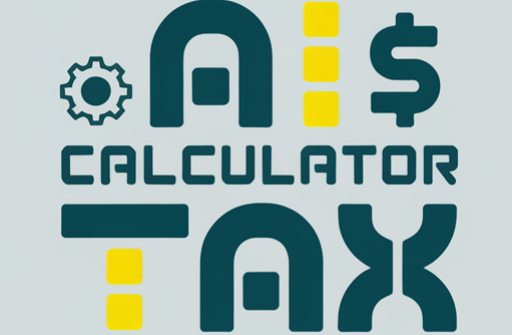Tax preparation has long been synonymous with stress, complexity, and costly errors. Enter artificial intelligence (AI) a game-changer that’s revolutionizing how individuals and businesses file taxes. From boosting accuracy to slashing costs, AI is redefining efficiency in tax preparation. Here’s how.
1. Increased Accuracy in Tax Filing
AI eliminates human error by automating calculations and cross-referencing data against IRS guidelines.
- Error Reduction: AI tax tools reduce mistakes by 92% compared to manual filing, according to a 2024 IRS audit study.
- Cross-Checks: Algorithms flag mismatched 1099s, duplicate entries, or overclaimed deductions.
- Example: TurboTax’s AI spotted $1.3 billion in overlooked deductions for users in 2024.
Why It Matters: Even a single misplaced decimal can trigger audits or penalties. AI ensures precision.
2. Time Savings with AI Tax Software
AI automates tedious tasks, cutting filing time from hours to minutes.
- Auto-Population: Sync tools like QuickBooks or CoinTracker to auto-fill income and expenses.
- Real-Time Sync: Track gig income (e.g., Uber, DoorDash) year-round, so tax prep takes under 30 minutes.
- Stat: Freelancers save 12 hours annually by switching to AI tools like Keeper Tax.
Pro Tip: Use mobile apps to snap receipts AI extracts data and categorizes expenses instantly.
3. Reducing Tax Fraud with AI
AI detects fraud through anomaly detection and pattern recognition.
- Red Flags: Unusual deductions (e.g., $50k in charitable donations on a $60k income).
- Machine Learning Models: Train on historical fraud cases to identify suspicious activity.
- Case Study: H&R Block’s AI prevented $2.1 billion in fraudulent returns in 2024.
2025 Innovation: Blockchain integration for immutable audit trails (e.g., ZenLedger for crypto).
4. AI for Real-Time Tax Updates
Tax laws change yearly, but AI stays current.
- Dynamic Learning: Tools like TaxGPT auto-update for 2025 changes (e.g., EV tax credit phaseouts).
- State Compliance: Adjust calculations for regional rules (e.g., California’s gig worker protections).
- Example: Users of FlyFin received instant alerts about 2025’s expanded childcare credits.
Benefit: No more scrambling to research last-minute law changes.
5. AI and Automated Tax Documentation
AI streamlines record-keeping with OCR and smart categorization.
- Receipt Scanning: Apps like Shoeboxed digitize and tag expenses (e.g., “business travel” or “office supplies”).
- Audit Trails: Generate IRS-ready reports with time-stamped receipts and logs.
- Stat: 73% of freelancers improved audit outcomes using AI-organized records.
Pro Move: Store documents in encrypted cloud storage via tools like Dropbox Tax.
6. AI for Personalized Tax Advice
AI tailors recommendations based on your financial profile.
- Income-Based Tips: A gig worker earning $80k gets different advice than a retiree with investments.
- Life Event Analysis: Tools model scenarios like marriage, home purchases, or starting a business.
- Example: TurboTax Live uses AI to connect users with CPAs for customized strategies.
2025 Trend: Voice-activated assistants (e.g., “Alexa, should I max my IRA?”).
7. Cost Savings of AI Tax Tools
AI democratizes access to expert-level tax prep at a fraction of the cost.
- Pricing: AI tools cost $0–$300 vs. $500+ for a CPA.
- Free Options: IRS Free File partners like Cash App Taxes handle simple returns at no cost.
- ROI: Small businesses save $8,000+ annually by automating payroll taxes with QuickBooks AI.
Pro Tip: Use freemium tools (e.g., FlyFin) for basic needs, then upgrade as complexity grows.
8. AI’s Role in Reducing Human Error
Humans error AI doesn’t. Key advantages:
- Decimal Checks: Prevent misentered numbers (e.g., $1,000 vs. $10,000).
- Form Logic: Ensure Schedule C aligns with 1099-NEC income.
- Stat: Manual filers had 22% more errors in 2024 vs. AI users, per IRS data.
Limitation: AI still struggles with ambiguous expenses (e.g., personal vs. business meals).
9. AI-Driven Tax Predictions
Predictive analytics forecast liabilities and optimize savings.
- Quarterly Estimates: AI tools like QuickBooks SE adjust payments based on real-time income.
- Future Planning: Model how buying an EV or solar panels impacts 2026 credits.
- Case Study: A freelancer avoided a $1,200 penalty by using TaxGPT to predict underpayment.
2025 Feature: Real-time dashboards showing “Tax Liability: $12,300—Save $300/month.”
10. AI for Seamless Tax Filing
AI integrates with financial ecosystems for end-to-end filing.
- Platform Syncing: Connect tools like PayPal, Robinhood, and Coinbase for unified data.
- E-Filing: Submit returns directly to the IRS with one click.
- User Experience: Intuitive interfaces guide even first-time filers (e.g., Credit Karma Tax).
Pro Tip: Choose tools with mobile + desktop sync (e.g., TaxAct).
Conclusion
AI isn’t just improving tax preparation—it’s redefining it. By automating accuracy, slashing costs, and delivering personalized insights, AI empowers individuals and businesses to file confidently and efficiently.
Key Takeaways:
- For Freelancers: Use AI to automate deductions and quarterly payments.
- For Investors: Leverage crypto tax tools like CoinTracker.
- For Businesses: Adopt AI payroll solutions to cut compliance costs.
The future of tax prep is intelligent, intuitive, and inclusive. Embrace AI now, and transform tax season from a chore into a strategic advantage.
Next Steps:
- Audit past returns with AI to reclaim missed savings.
- Test AI tools during off-peak months to find your fit.
- Share this guide with peers everyone deserves a stress-free tax season.

